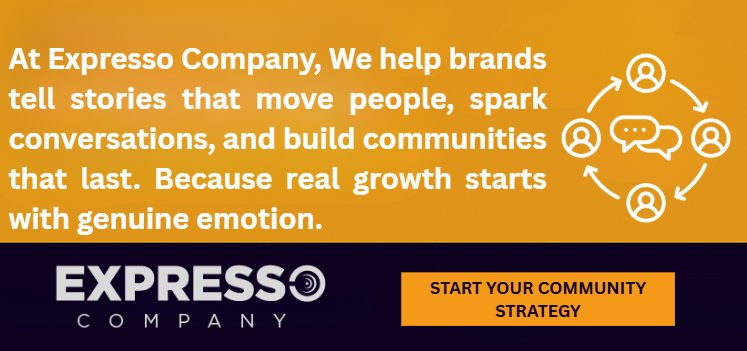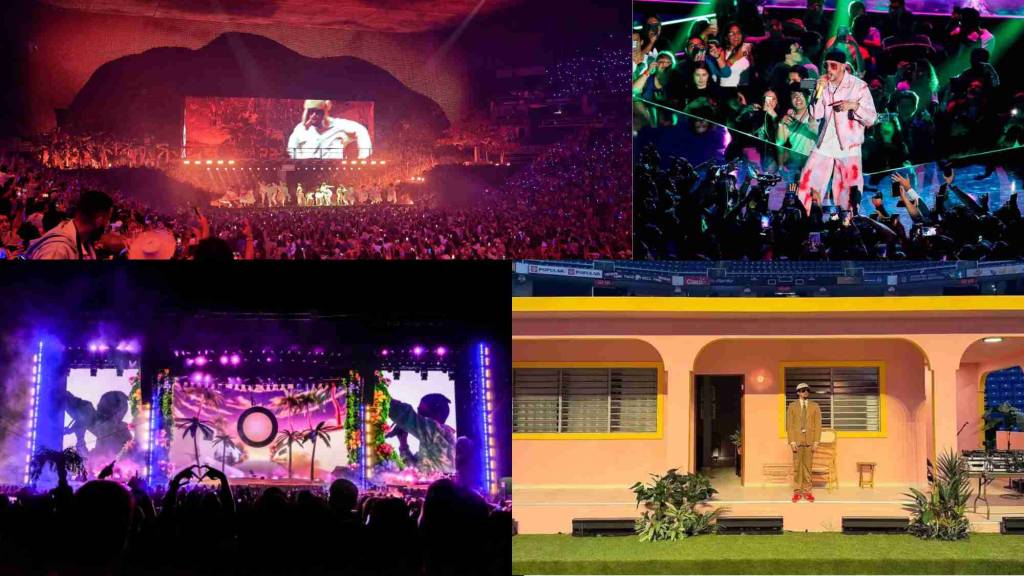When Culture Becomes a Marketing Strategy
The Bad Bunny phenomenon is not just a music story. It is a living example of how culture, emotion, and storytelling can transform a personal brand into a global powerhouse.
Every decision Bad Bunny makes, from his performances in Puerto Rico to his collaborations with major brands like Adidas and Gucci, is driven by authenticity and purpose.
For business owners, his journey offers valuable lessons about modern marketing. Today’s customers do not connect with products alone; they connect with meaning.
Bad Bunny shows that by staying true to your identity and telling your story honestly, you can create a loyal audience that converts.
Who Is Bad Bunny and What Makes His Personal Brand So Powerful
Bad Bunny, whose real name is Benito Antonio Martínez Ocasio, is a Puerto Rican artist who has become one of the most influential figures in global music.
However, what makes him stand out is not only his talent but his ability to use authenticity as a marketing strategy.
He represents individuality, self-expression, and cultural pride. From his unapologetic fashion choices to his lyrics that mix social awareness with emotion, Bad Bunny challenges conventions while staying loyal to his roots.
He never changed who he was to reach global fame. Instead, he made the world appreciate his authenticity.
For digital marketers and business owners, this is the heart of successful branding. When you build your strategy on honesty and purpose, you create an identity that people trust, remember, and want to support.
Cultural Branding in Digital Marketing: Speaking from Who You Are
Cultural branding means aligning your business with the values and emotions of your audience. Bad Bunny mastered this by turning Puerto Rican culture into a global symbol of pride and creativity.
In digital marketing, cultural branding starts with self-awareness. Ask yourself:
- What does your brand truly represent?
- What are the values that guide your work?
- What are the emotions you want your audience to feel when they interact with your business?
When you answer those questions clearly, your content becomes more powerful. Use your website, visuals, and social media to express that identity consistently.
People connect with brands that reflect who they are or who they aspire to be. Cultural branding is not about following trends; it is about creating meaning that lasts.

How Building a Community Strengthens Your Marketing Strategy
Bad Bunny’s followers are more than fans; they are a community that feels represented. This same principle applies to business marketing. A strong brand is not built through sales alone. It grows through genuine relationships.
To build a loyal community, you need to create opportunities for real connection. You can do this by:
- Sharing stories from your clients to inspire trust and authenticity.
- Highlighting user-generated content to make your audience feel seen and valued.
- Showing appreciation through thank-you posts, shoutouts, or special mentions.
- Inviting conversation to keep your audience engaged and connected.
- Making people feel heard by showing that their opinions truly matter.
When customers see themselves reflected in your brand, they become emotionally invested. A community built on trust and engagement will amplify your message more effectively than any paid campaign.
Storytelling in Business: Turning Messages into Emotional Connections

Storytelling is the foundation of modern marketing. Bad Bunny uses it in everything he does: from the visuals in his music videos to the themes of his concerts. Each element tells a consistent story about identity, belonging, and pride.
For your business, storytelling helps turn your brand from a company into a meaningful experience. Instead of focusing only on features or prices, focus on transformation.
- What does your business help people achieve?
- What challenges do you help them overcome?
Example for the Cleaning Industry
If you’re a cleaning company, don’t just show spotless floors. Tell the story behind them.
- Share how you helped a new homeowner turn a dusty renovation site into a cozy, welcoming space.
- Highlight the joy of a busy parent who finally feels at peace in a clean home after a long week.
- Talk about the confidence your commercial clients feel when their office shines for that big meeting.
Real stories build trust because they show transformation people can relate to. From chaos to calm. From stress to relief.
That’s the emotional connection that turns one-time clients into lifelong customers.
Designing Memorable Brand Experiences Online
Bad Bunny’s concerts are immersive, emotional, and unforgettable. The visuals, sounds, and stage design make audiences feel like they are part of something bigger. This same approach applies to online branding.
Your digital presence should make people feel something the moment they land on your website or social page.
The tone, visuals, and navigation should all work together to express your brand identity. A consistent experience across platforms builds familiarity and confidence.
Example for Branding Consistency
If your brand is creative, your design and messaging should feel vibrant, playful, and full of energy. Use bold visuals, engaging copy, and a tone that inspires curiosity and excitement.
If your brand is more corporate or educational, keep your communication clean, informative, and trustworthy. Focus on clarity and value to position your brand as a reliable source of knowledge.
Consistency across all digital touchpoints helps your audience recognize and remember you. From your website and social media to your emails and visuals, every detail should reflect who you are and what you stand for.
Authentic Marketing That Builds Trust and Loyalty
Authenticity has become one of the most valuable marketing strategies in today’s digital world. Bad Bunny never tries to be someone he’s not, and that’s exactly why people connect with him.
For your business, being authentic means showing your real story and your human side. Share your values, your purpose, and even the lessons you have learned along the way. Authentic content creates emotional connection because it feels honest.
People no longer want perfection. They want real experiences with real brands. When your audience trusts you, they become loyal advocates who help your business grow naturally.
Strengthening Your Digital Presence with Purpose
Once your prompt (and optional photo) is ready, hit the submit button (the paper airplane icon). Gemini will generate your Polaroid-style image within seconds.

Bad Bunny’s image and message are consistent across every channel he uses. This is an example of omnichannel branding, where every digital platform communicates the same voice, visuals, and story.
To strengthen your digital presence, start with a quick audit. Check if your website, social media, and email marketing align visually and tonally. A cohesive online presence shows professionalism and builds recognition.
You should also rely on data to refine your strategy. Analytics reveal which type of content performs best.
If your audience interacts more with video content or storytelling posts, prioritize those formats. Purposeful digital marketing is not about doing more; it is about doing what works best for your audience.
From Connection to Conversion: Applying the Bad Bunny Blueprint
Emotional connection is valuable, but conversion is the ultimate goal. Bad Bunny’s influence led to economic impact in Puerto Rico, generating tourism, media attention, and local business growth.
For your brand, you can create the same connection by keeping things simple and intentional:
- Guide your audience toward the next step after they engage with your content.
- Use storytelling on your landing pages to show real value and emotion.
- Write personal calls to action that feel natural and human.
- Make the process easy so buying or booking feels effortless.
When you combine emotion with strategy, your marketing becomes powerful. People who relate to your story are far more likely to invest in your services or products.
Key Takeaways for Business Owners Who Want to Build a Meaningful Brand
Bad Bunny’s success is more than talent; it is the result of a clear and consistent branding strategy.
Here are the main lessons you can apply to your own business:
- Be authentic. Stay true to your values and personality.
- Connect emotionally. Make your content human and relatable.
- Be consistent. Align your visuals, tone, and message everywhere.
- Create experiences. Make every interaction feel purposeful and memorable.
- Encourage action. Guide people from awareness to conversion naturally.
When you integrate these principles, your digital marketing becomes more than promotion. It becomes a way to build real trust and long-term relationships.
Conclusion: Culture Converts When It Is Real
Bad Bunny proves that authenticity and emotion are stronger than any algorithm. He turned cultural pride into a global movement that connects millions of people.
Your business can do the same on its own scale. When your brand communicates with honesty, consistency, and heart, people do not just remember you, they believe in you.
The future of digital marketing is not about selling. It is about storytelling, connection, and community. When you master that balance, conversions will follow naturally.
FAQs: The Bad Bunny Phenomenon and Digital Marketing Insights
Who is Bad Bunny and why is he relevant to digital marketing?
Bad Bunny is a Puerto Rican artist who built his global influence through authenticity and storytelling. His approach reflects how modern branding connects culture with business success.
What is cultural branding in digital marketing?
Cultural branding means aligning your brand with your audience’s values, beliefs, and emotions. It helps businesses stand out by creating emotional loyalty instead of focusing only on sales.
Why is authenticity important in online marketing?
Authenticity builds trust and transparency. When audiences believe your brand is genuine, they are more likely to engage and become long-term customers.
How can storytelling increase conversions?
Storytelling creates empathy. When people relate to your message emotionally, they are more likely to act, whether that means purchasing, subscribing, or contacting your business.
What can small businesses learn from the Bad Bunny phenomenon?
Small businesses can learn that staying true to their story and connecting with their community is more effective than chasing trends. Authentic marketing creates sustainable growth.






